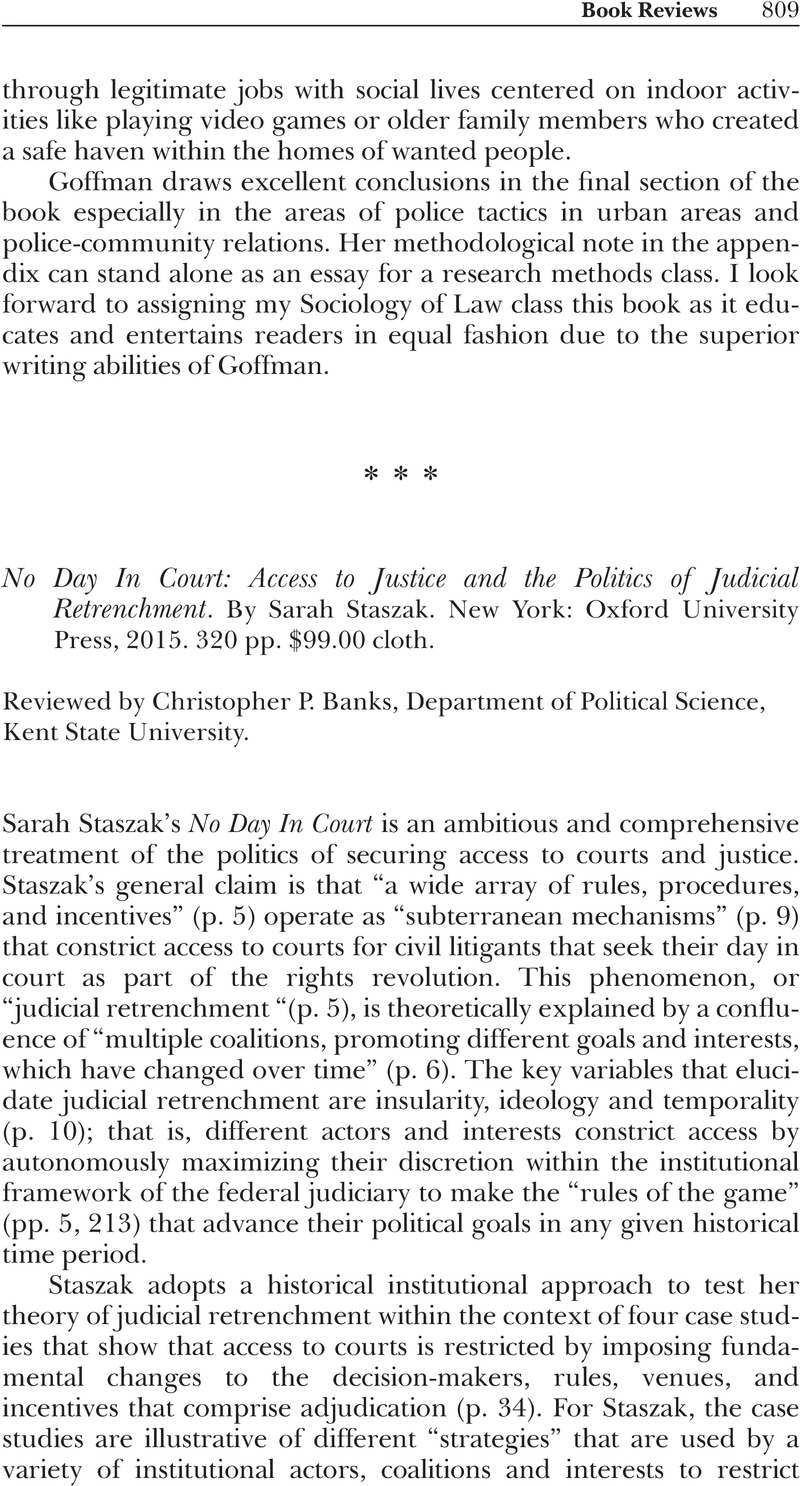No CrossRef data available.
Article contents
No Day In Court: Access to Justice and the Politics of Judicial Retrenchment. By Sarah Staszak. New York: Oxford University Press, 2015. 320 pp. $99.00 cloth.
Review products
No Day In Court: Access to Justice and the Politics of Judicial Retrenchment. By Sarah Staszak. New York: Oxford University Press, 2015. 320 pp. $99.00 cloth.
Published online by Cambridge University Press: 01 January 2024
Abstract
An abstract is not available for this content so a preview has been provided. Please use the Get access link above for information on how to access this content.

- Type
- Book Reviews
- Information
- Copyright
- © 2016 Law and Society Association.


